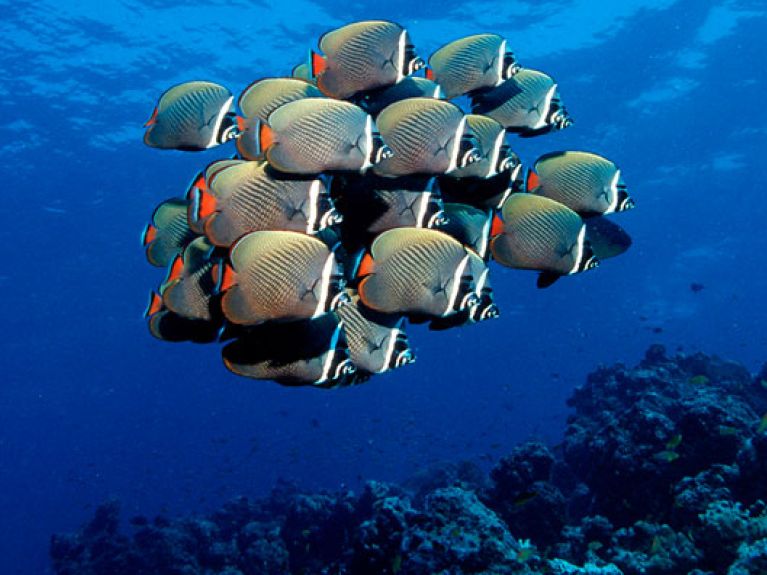Seas and oceans
Protection of the seas and oceans is the central focus of the Year of Science 2016*17.

The world’s seas and oceans inspire in us a sense of longing, provide us with food and constitute important trading routes. The planet’s largest natural habitat, they cover roughly 70 percent of the Earth’s surface and are home to countless species. Because this habitat is so essential, the Year of Science 2016*17 is dedicated to the seas and oceans. “Discover, use, protect” is the motto for a dialogue between the general public and scientists during the Year of Science.
More than half of the world’s population live in coastal regions, for the seas are a valuable source of food: some 150 million tons of fish are caught each year. This has consequences: some areas have been heavily overfished – including for example the German Baltic Sea. Apart from fishing, trade also means that the oceans play an important economic role. Around 45,000 cargo ships ply the world’s seas, transporting close to ten billion tons of goods every year – thus more than two thirds of the world’s total freight volume is shipped by sea.
People have always been fascinated by the sea, discovering the vast expanses of the oceans as pioneers and missionaries, as explorers and conquerors, as merchants and emigrants. Nowadays, research provides us with important data that help us better understand the seas and oceans. During the Year of Science 2016*17, scientists will offer insights into their work and invite the general public to engage in an open exchange about the future of the seas. To this end, the “MS Wissenschaft” exhibition ship will tour throughout Germany. A specially converted cargo ship, it will set sail from the Port of Kiel on 4 May and travel along the waterways of Northern Germany until September 2016. In 2017, the “MS Wissenschaft” will also visit cities in the southern states of Germany.
Seas as climate protectors and rubbish dumps
The world’s seas are true climate protectors. Over the past 150 years, they have absorbed roughly half of the carbon dioxide generated by humankind. Without them, climate change would already have progressed much further. However, human impact has changed the oceans in recent decades and centuries. Absorbing such large quantities of carbon dioxide from the atmosphere has lowered the water’s pH level – making it more acidic and damaging shellfish and coral. What is more, large quantities of plastic waste are turning the seas and oceans into global rubbish dumps: microplastics can these days be found in fish, small marine wildlife and Arctic ice. One key question will be what humans can do to protect the seas and oceans.
World Water Day on 22 March 2016
https://www.bmbf.de/de/wissenschaftsjahr-2016-17-meere-und-ozeane-2368.html

